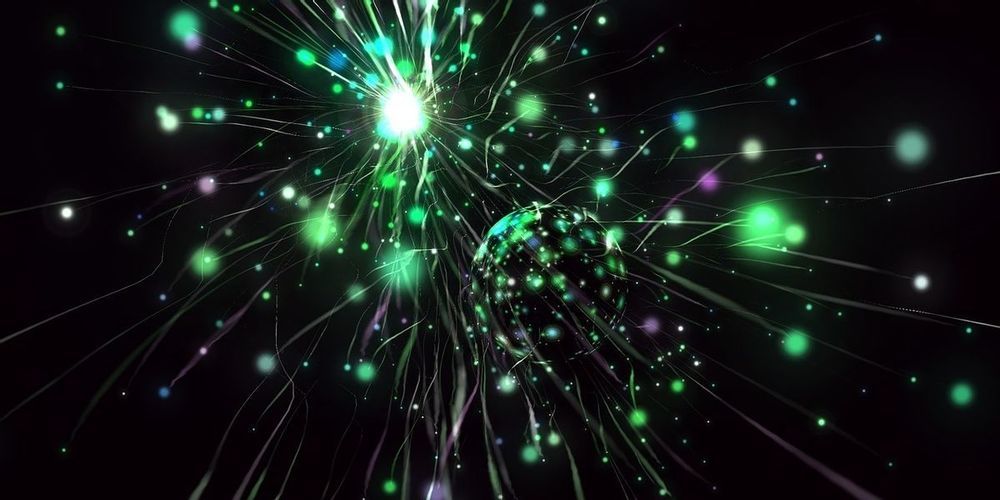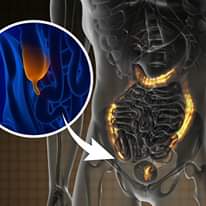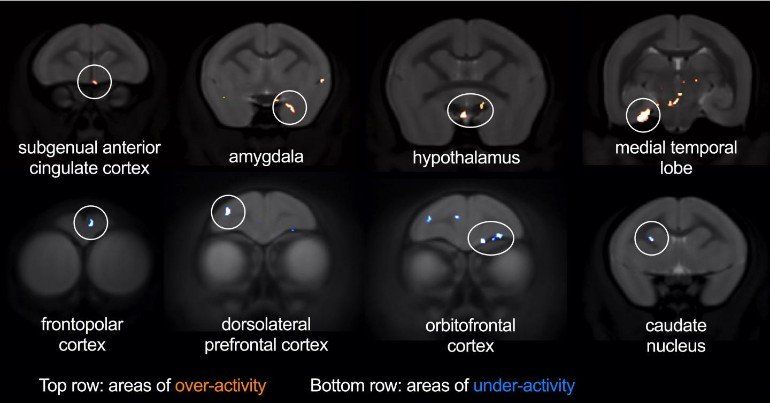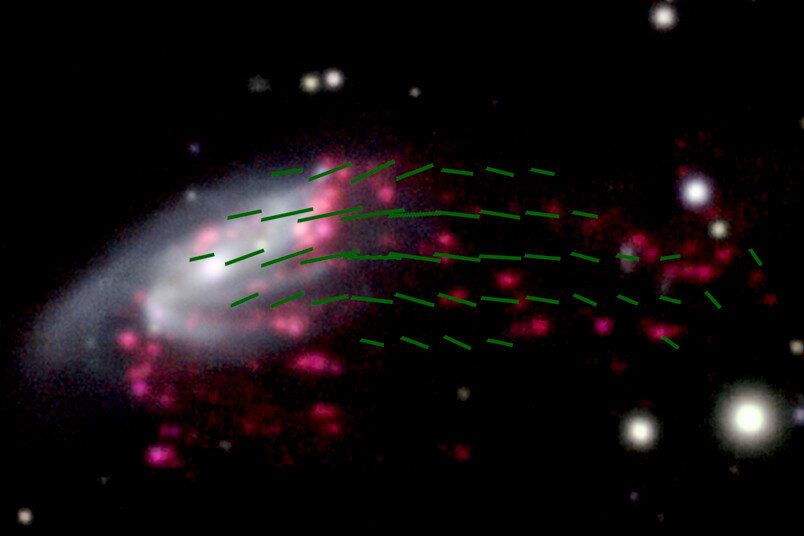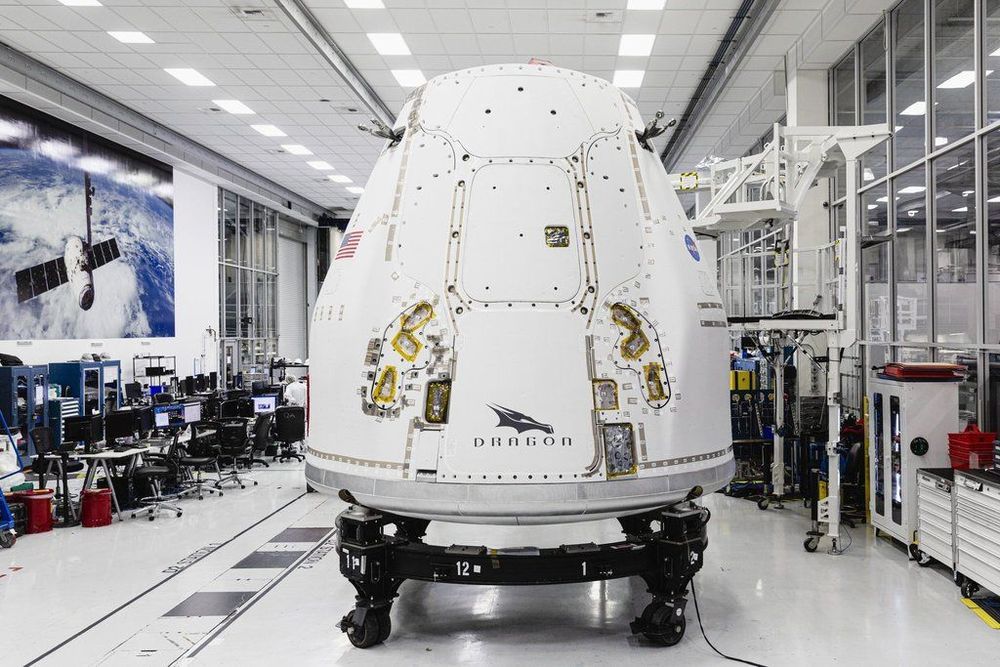Page 6113
Oct 26, 2020
Scientists Send Boston Dynamics Robodog Into Chernobyl
Posted by Raphael Ramos in categories: mapping, robotics/AI

The robodog is now going to places where humans and real dogs cannot.
The robot helped create 3D maps of radioactivity.
Oct 26, 2020
Inspiring future space explorers: Q&A with former NASA astronaut Leland Melvin
Posted by Genevieve Klien in categories: education, space travel
Oct 26, 2020
Single Brain Region Links Depression and Anxiety, Heart Disease, and Treatment Sensitivity
Posted by Genevieve Klien in categories: biotech/medical, neuroscience
Overactivity in the subgenual anterior cingulate cortex underlies several key symptoms of depression, anxiety, and heart disease.
Summary: Over-activity in the subgenual anterior cingulate cortex underlies several key symptoms of depression, anxiety, and heart disease.
Source: University of Cambridge
Oct 26, 2020
The magnetic fields of the jellyfish galaxy JO206
Posted by Genevieve Klien in categories: physics, space
An international team of astronomers has gained new insights into the physical conditions prevailing in the gas tail of so-called jellyfish galaxies. They are particularly interested in the parameters that lead to the formation of new stars in the tail outside the galaxy disk. They analyzed, for example, the strength and orientation of the magnetic fields in the galaxy JO206.
Ancla Müller and Professor Ralf-Jürgen Dettmar from Ruhr-Universität Bochum describe their findings together with Professor Christoph Pfrommer and Dr. Martin Sparre from the Leibniz Institute for Astrophysics in Potsdam as well as colleagues from the INAF—Italian national institute of Astrophysics in Padua, Selargius and Bologna in the journal Nature Astronomy from 26 October 2020.
Oct 26, 2020
SpaceX prepares upgraded cargo Dragon for NASA’s next resupply mission to the Space Station
Posted by Genevieve Klien in category: space travel
SpaceX is preparing an upgraded cargo Dragon capsule for NASA’s next resupply mission to the International Space Station (ISS). It will be SpaceX’s 21st cargo mission under the agency’s second Commercial Resupply Services contract to deliver equipment and supplies needed to perform science research at the orbiting laboratory.
SpaceX has completed 20 cargo Dragon missions to and from the space station. The company has delivered over 95,000 pounds of supplies and returned 75,000 pounds. “Cargo resupply from U.S. companies ensures a national capability to deliver critical science research to the space station, significantly increasing NASA’s ability to conduct new investigations at the only laboratory in space,” the agency wrote in a press release.
The mission will be the first resupply mission that will utilize SpaceX’s upgraded version of the cargo Dragon capsule, that is capable of carrying 50% more payload mass. This week NASA announced it targets to conduct the mission no earlier than December. A Falcon 9 rocket carrying Dragon will liftoff from Launch Complex 39A at NASA’s Kennedy Space Center in Florida.
Oct 26, 2020
Study offers more complete view of massive asteroid Psyche
Posted by Genevieve Klien in category: space
A new study authored by Southwest Research Institute planetary scientist Dr. Tracy Becker discusses several new views of the asteroid 16 Psyche, including the first ultraviolet observations. The study, which was published today in The Planetary Science Journal and presented at the virtual meeting of the American Astronomical Society’s Division for Planetary Sciences, paints a clearer view of the asteroid than was previously available.
At about 140 miles in diameter, Psyche is one of the most massive objects in the main asteroid belt orbiting between Mars and Jupiter. Previous observations indicate that Psyche is a dense, largely metallic object thought to be the leftover core of a planet that failed in formation.
“We’ve seen meteorites that are mostly metal, but Psyche could be unique in that it might be an asteroid that is totally made of iron and nickel,” Becker said. “Earth has a metal core, a mantle and crust. It’s possible that as a Psyche protoplanet was forming, it was struck by another object in our solar system and lost its mantle and crust.”
Oct 26, 2020
European startups that are hacking the brain better than Neuralink
Posted by Nicholi Avery in categories: cybercrime/malcode, Elon Musk, neuroscience
…BIOS is doing pretty much the same thing as Neuralink — only in many respects better.
Elon Musk’s Neuralink wants to hack the brain – here are the European neurotechnology startups that are doing the same with a lot less funding.
Oct 26, 2020
Quantum Physics Milestone: Controlled Transport of Stored Light
Posted by Quinn Sena in categories: particle physics, quantum physics
Patrick Windpassinger and his team demonstrate how light stored in a cloud of ultra-cold atoms can be transported by means of an optical conveyor belt.
A team of physicists led by Professor Patrick Windpassinger at Johannes Gutenberg University Mainz (JGU) has successfully transported light stored in a quantum memory over a distance of 1.2 millimeters. They have demonstrated that the controlled transport process and its dynamics has only little impact on the properties of the stored light. The researchers used ultra-cold rubidium-87 atoms as a storage medium for the light as to achieve a high level of storage efficiency and a long lifetime.
“We stored the light by putting it in a suitcase so to speak, only that in our case the suitcase was made of a cloud of cold atoms. We moved this suitcase over a short distance and then took the light out again. This is very interesting not only for physics in general, but also for quantum communication, because light is not very easy to ‘capture’, and if you want to transport it elsewhere in a controlled manner, it usually ends up being lost,” said Professor Patrick Windpassinger, explaining the complicated process.
